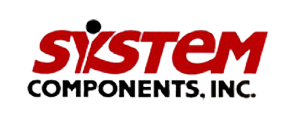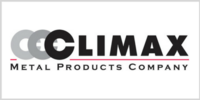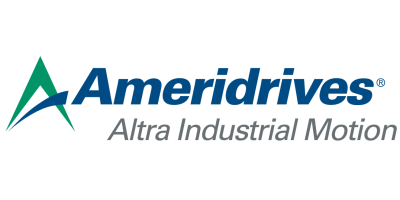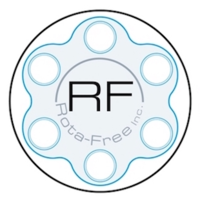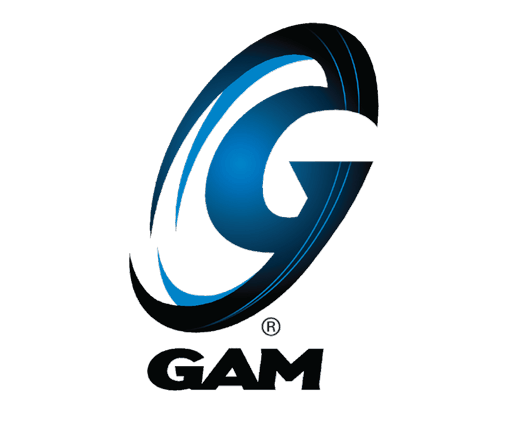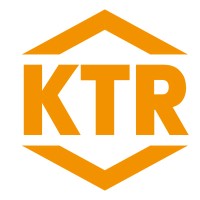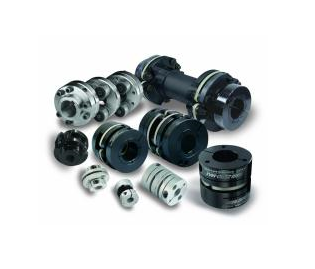
Shaft Couplings
Shaft Couplings are mechanical devices that connect rotating shafts absorbing degrees of misalignment and mounting errors between the two shafts. They allow for smooth rotation providing mechanical flexibility. Shaft couplings are categorized as rigid couplings and flexible couplings. A rigid coupling is utilized to connect shafts aligned precisely, while a flexible coupling can handle varying degrees of misalignment between shafts.
They can be used for motors, generators, compressors, pumps, machines, engines, etc. We offer a wide variety of shaft couplings such as Rigid, Flywheel, Safety, Flange, Servo, Gear, Drum, Fluid, Barrel, Elastomeric, Pin & Bush, Disc Coupling, and others.
Check our Blog to check our articles about Gear Couplings, Features and Applications of Ringfeder Barrel Couplings, and MetaFlex Servo Couplings by Rota Free / Compomac.
HVH Industrial works with manufacturers' specialized engineering teams to meet our customers' requirements and highest quality standards.
If you have any questions, write us via live chat (one of our team members will answer your questions), give us a call, or send us a quote request. The HVH team is always ready to help you.
 1(866)577-4040
1(866)577-4040
or
Shaft Couplings
Manufacturers
What are Shaft Couplings
A shaft coupling is a mechanical device that connects two shafts that turn in the same direction to transmit power. Shaft couplings absorb degrees of misalignment and mounting errors between the two shafts and allow smooth rotation by providing mechanical flexibility. Shaft couplings are categorized as rigid couplings and flexible couplings. A rigid coupling is used to connect shafts that are aligned precisely, while a flexible coupling can handle varying degrees of misalignment between shafts.
There are many types of couplings, and not all types will perform the same in a given application; therefore, a significant evaluation of the application goals is essential when selecting the proper coupling type.
Types of Couplings
Flange Couplings consist of two flanged hubs that are bored and keyed to fit their shafts. The shafts connected by the coupling can be similar or have different diameters. Flange couplings are usually made from carbon steel and are designed for heavy-duty applications. The main advantages of a flange coupling are easy installation and removal, minimum maintenance, and wear.

Flange Coupling
Sleeve Couplings are made only of one piece of material and are factory bored to fit in a standard shaft. It consists of broached keyways and installed setscrews. The keys transmit torque from the shaft to the coupling hub, and the screws keep the coupling from sliding along the shaft. Sleeve couplings are designed for light to medium-duty applications.

Sleeve Coupling
Ribbed Couplings consist of two pieces and connect shafts with the same diameter. The couplings are clamped onto the shaft and are held together by bolts. Ribbed couplings are used for heavy-duty operations. They require no maintenance and are easy to install and detach.

Ribbed Coupling
Gear Couplings consist of two hubs with external teeth that engage with the internal teeth on a sleeve. The sleeve can be a one-piece or sometimes a two-piece sleeve, and the teeth can be straight or curved, but when using an angle over 0.5 degrees, it's better to use curve teeth. Gear couplings are capable of transmitting high torque at high speed. Also, gear couplings handle the backlash, which is the misalignment with axial clearance between the gear teeth. They are used for medium and large equipment applications. Check our blog article on the Benefits of Gear Couplings for more information.

Gear Coupling by Ringfeder
Grid Couplings consist of two hubs with many slots and are made of metal. The sliding movement within the slots can cause parallel and angular misalignments. The slots are tapered to make space for the grid to flex. Grid couplings provide vibration dampening and softening of shock loads. Also, grid couplings do not transmit power as gear couplings but are less expensive. They are used for small to medium applications like pumps and bulk conveyors.

Grid Coupling by Ringspann
Elastomeric Couplings are made of a flexible elastic material that transmits torque. The material may be mechanically interlocked, molded, clamped, or bolted to the hubs. Elastomeric couplings are subject to operating temperature limitations depending on the elastomeric material used, but they offer better shock resistance and vibration damping than other couplings. Elastomeric couplings are commonly used in pumps where vibration dampening is needed to protect the shafts and keyways of the pump and motor.
Pin and bushing coupling is an elastomeric coupling mainly used to accommodate misalignment and transmit power. It is used in engine-driven devices to absorb energy and dampen loads.

Elastomeric Coupling by TB Wood's

Pin and Bush Coupling by Ringspann
Metal Bellow Couplings are highly precise, torsionally stiff, backlash-free devices used in applications where torques or rotary movements must be transmitted from shaft to shaft with the highest angular accuracy. Bellows couplings are also suitable for speed control applications. Stainless steel made of metal bellow couplings effectively compensates for radial, axial and angular shaft misalignments. Metal bellow couplings can be with radial set screws, short clamping hubs, standard clamping hubs, etc.

Metal Bellow Coupling by Ringfeder
Tire Couplings are torsionally soft flexible couplings that provide an optimum torque transmission and compensate for large quantities of shock-loading backlash and parallel and axial misalignments. These non-lubricated couplings consist of two hubs made of cast iron or steel with two halves joined by a rubber tire. The Tire Couplings can be widely used for piston pumps, compressors, rolling mills, internal combustion engines, crushers, mixers, wastewater purification plants, and many other applications.

Tire Coupling by TB Wood'S
Fluid Coupling is a coupling that uses hydraulic fluid to transmit torque from one shaft to another. A fluid coupling is intended for challenging applications providing damping and separation of rotary oscillation, thereby reducing restoring forces to a minimum. Fluid couplings operate according to the Föttinger principle. The input and output parts of the coupling are not connected mechanically. Thus the coupling is wear-free. The torque is transmitted by fluid movement in the coupling, accelerated by the radial blades. Fluid couplings are widely used for conveyor belts, tube mills, roller presses, generators, mixers, wastewater purification plants, water screw pumps, etc.
Fluid Coupling by Flender
Disk Couplings transmit torque by a tensile force between a standard bolt circle's alternating driving and driven bolts. Most disk couplings are made of spring steel that allows angular or parallel misalignment while providing torsional rigidity. Also, disk coupling doesn't need lubrication like other couplings because there is no sliding between the parts. They are used in various applications like pumps, blowers, compressors, fans, natural gas refineries, and motor-generator sets. You can also check our article on Stromag Periflex® VN Disc Coupling.

Disk coupling by Ringfeder
Universal Joint or U-Joint connects two objects, typically shafts, allowing relative rotation in two axes. It also allows for power transmission between two points not in line with each other. The universal joint is not a constant velocity coupling; the driving and driven shafts rotate at different speeds. U-Joints are used in applications where high misalignment must be accommodated. U-joints are mainly used in power transmission applications, including farm machinery, automobile and truck driver shafts, and industrial equipment.

Universal Joint by Ameridrives

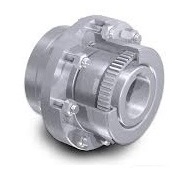





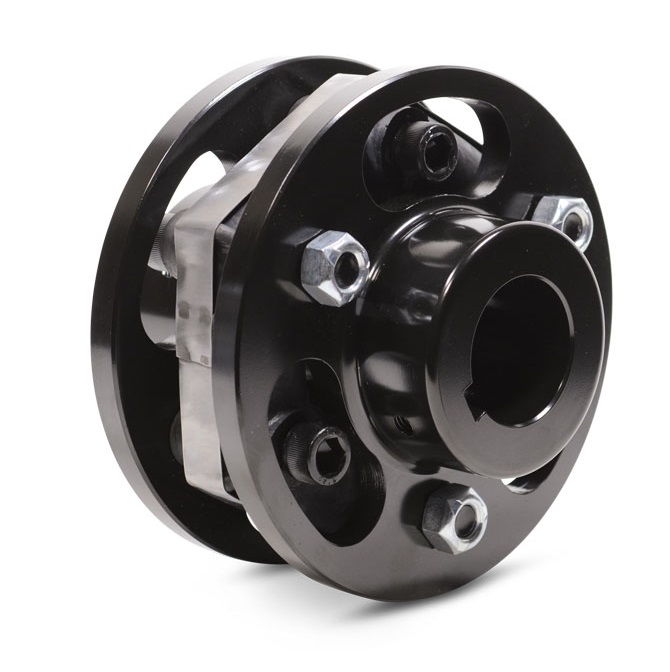


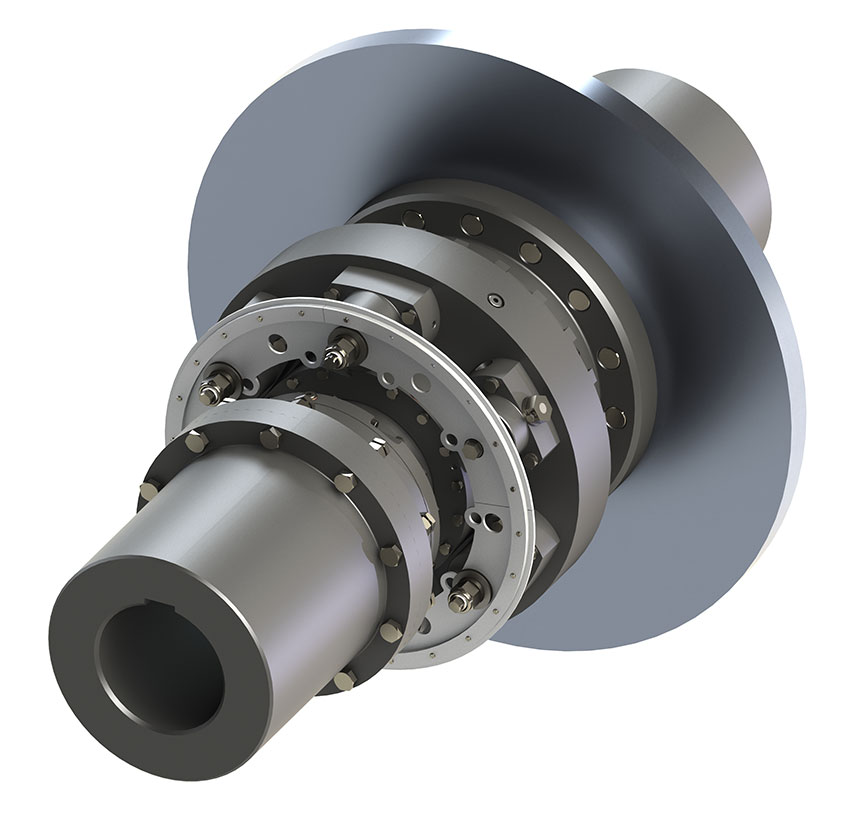
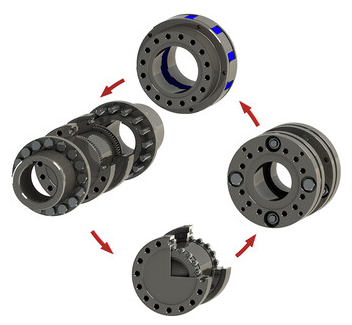


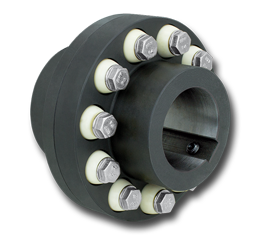

.jpg)







